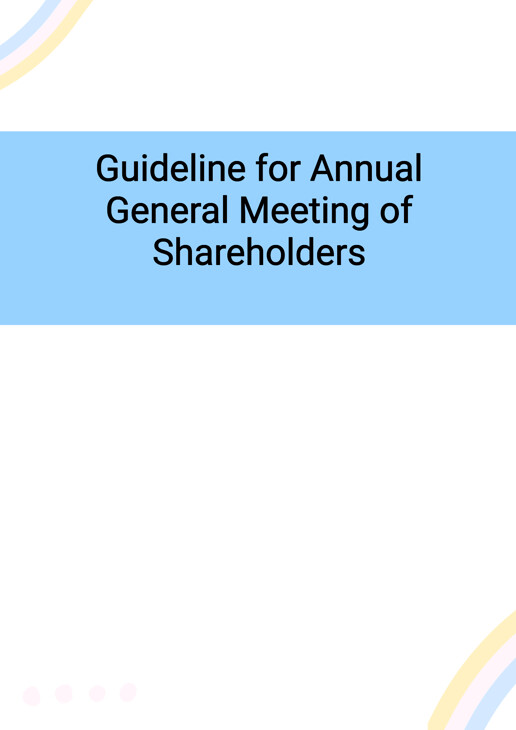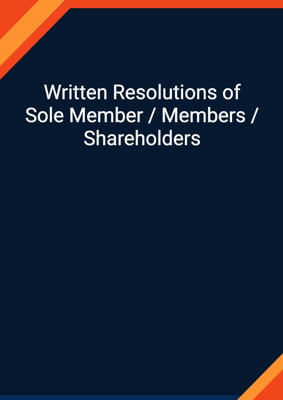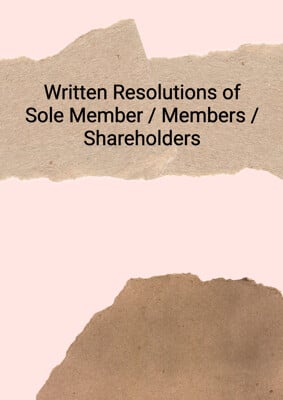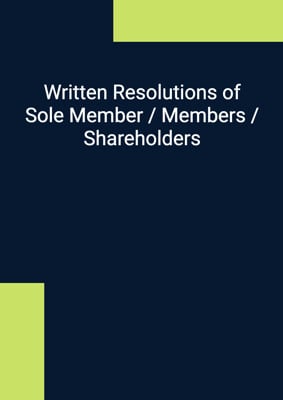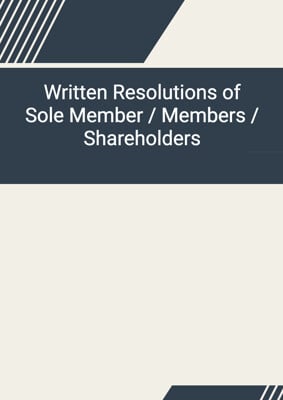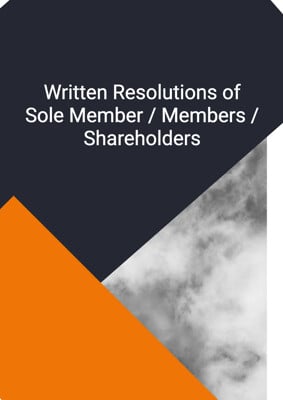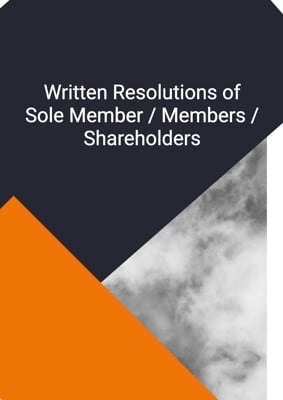How to Tailor the Document for Your Need?
01
Create Document
Click "Create Document" button and the document will be prepared with your account details automatically filled in.
02
Fill Information
Please fill in any additional information by following the step-by-step guide on the left hand side of the preview document and click the "Next" button.
03
Get Document
When you are done, click the "Get Document" button and you can download the document in Word or PDF format.
04
Review Document
Please review the document carefully and make any final modifications to ensure that the details are correct before publication / distribution.
Document Preview
Document Description
The document titled 'Guideline for Annual General Meeting of Shareholders' is a comprehensive guide that provides detailed instructions and information on how to conduct an annual general meeting (AGM) of shareholders. The document emphasizes the importance of the AGM as a platform for shareholders to exercise their rights and make important decisions regarding the company's affairs.
The document begins with an introduction that highlights the significance of the AGM and the attendees who are entitled to participate. It explains that only members, auditors, and certain officers of the company have the right to attend the meeting, while other individuals may attend at the discretion of the chairman.
The document then covers various aspects of the AGM, including the appointment of proxies, the authority of corporate representatives, and the role of board committees. It explains that proxies can be appointed by members who are unable to attend the meeting in person, and that corporate representatives have the same powers as individual shareholders. The chairmen of the audit, remuneration, and nomination committees are also expected to be present at the AGM to answer any questions.
The document further discusses the attendance of auditors, advisors, observers, and the press and analysts at the AGM. It explains that auditors have the right to attend and be heard on matters concerning their role, while advisors may be invited by the chairman to provide technical advice. Observers who are not members of the company may be allowed to attend the meeting, subject to the articles or the chairman's discretion. The attendance of the press and analysts is at the discretion of the chairman, with priority given to members.
The role of the company secretary is also highlighted in the document. The company secretary is responsible for ensuring the proper administration of the meeting, including checking proxies, ensuring a quorum is present, and assisting with the voting process. The document provides guidance on the tasks the company secretary should consider in preparation for the AGM, such as preparing a script for the chairman and briefing notes for potential shareholder questions.
Additionally, the document outlines the documents that should be made available at the meeting, including a checklist prepared by the company secretary and copies of directors' service contracts. It also discusses the general powers and duties of the chairman, including their role in preserving order, treating minority shareholders fairly, and making decisions on procedural matters.
The document provides guidance on preserving order at the meeting and the chairman's response to disruptions. It explains that the chairman should aim to balance the rights of shareholders to be heard with the need to prevent any individual or group from dominating the meeting. The document outlines the procedures for expelling non-members and disorderly members from the meeting, as well as the circumstances in which the chairman may adjourn the meeting.
Furthermore, the document covers the scope of discussion at the meeting and the chairman's responsibility to regulate the discussion. It explains that the chairman should give shareholders a reasonable opportunity to discuss and ask questions on matters covered by the resolutions. The document provides guidance on answering shareholder questions, including the chairman's discretion to defer responses or refer questions to colleagues.
The document also addresses procedural matters, such as opening and closing the meeting, determining the quorum, and proposing and seconding resolutions. It explains the procedures for requisitioned resolutions, proposing amendments to resolutions, and introducing additional resolutions. The document provides guidance on the chairman's role in preserving order, ensuring the proper conduct of the meeting, and deciding points of order.
The voting process is explained in detail, including the right to vote, methods of voting (show of hands and poll), and the chairman's casting vote. The document outlines the requirements for passing ordinary, extraordinary, and special resolutions, as well as the procedures for demanding a poll and appointing scrutineers.
Finally, the document provides information on proxies, including the authority of proxies, the method of appointment, and the use of proxies at adjourned meetings. It explains that proxies can be revoked by the appointor and that the confidentiality of proxies is generally maintained.
In conclusion, the 'Guideline for Annual General Meeting of Shareholders' is a comprehensive document that provides detailed instructions and information on how to conduct an AGM. It covers all aspects of the meeting, from the importance of the AGM to the role of different attendees, the responsibilities of the chairman and company secretary, and the procedures for voting and appointing proxies. This document serves as a valuable resource for companies and shareholders in ensuring the smooth and efficient conduct of AGMs.
How to use this document?
1. Determine the attendees: Identify the individuals who are entitled to attend the AGM, including members, auditors, and certain officers of the company. Consider allowing other individuals to attend at the discretion of the chairman.
2. Appoint proxies or corporate representatives: Inform members about the option to appoint proxies or corporate representatives to attend and vote on their behalf. Explain the process for appointing proxies and the authority they have.
3. Ensure the presence of board committee chairmen: Request the chairmen of the audit, remuneration, and nomination committees to be available at the AGM to answer any questions related to their respective areas.
4. Allow attendance of auditors: Inform the auditors of the company that they have the right to attend the AGM and be heard on matters concerning their role.
5. Consider advisors' presence: Decide whether to invite the company's solicitors, accountants, or other advisors to the AGM to provide advice or comment on technicalities if necessary.
6. Determine the presence of observers: Check the articles of the company to see if they allow or if the chairman has the discretion to permit observers who are not members of the company to attend the meeting.
7. Manage attendance of the press and analysts: Give priority to members if space is limited and consider allowing attendance of the press and analysts at the discretion of the chairman.
8. Coordinate with the company secretary: Ensure that the company secretary is responsible for the proper administration of the meeting. Discuss the tasks the company secretary should consider, such as preparing a script for the chairman and briefing notes for potential shareholder questions.
9. Prepare necessary documents: Compile a checklist of the documents that should be made available at the meeting, including copies of directors' service contracts. Ensure that these documents are prepared and ready for inspection.
10. Preserve order at the meeting: Instruct the chairman to preserve order during the meeting and ensure that all attendees have a reasonable opportunity to speak and be heard. Encourage the chairman to balance the rights of shareholders while preventing any individual or group from dominating the meeting.
11. Respond to disruptions: Instruct the chairman on how to respond to disruptions, such as asking the disruptive element to appoint a representative, offering a separate discussion outside the meeting, or considering adjourning the meeting if necessary.
12. Regulate discussion and questions: Advise the chairman to regulate the discussion and questions at the meeting, ensuring that all relevant matters are covered and a fair cross-section of views is heard. Consider limiting the number of questions on a single topic or the number of points raised by individual shareholders.
13. Answer shareholder questions: Instruct the chairman to answer shareholder questions to the best of their ability, referring questions to colleagues if necessary. Encourage the chairman to provide satisfactory responses and consider promising a written reply for any unanswered questions.
14. Follow proper procedures: Guide the chairman on the proper procedures for opening and closing the meeting, determining the quorum, proposing and seconding resolutions, and handling procedural motions. Ensure that the chairman follows the articles and acts in the best interests of the company.
15. Conduct voting: Explain the methods of voting, including a show of hands and a poll. Instruct the chairman on when to call for a poll and how to declare the result. Clarify the chairman's role in exercising proxies if applicable.
16. Maintain confidentiality of proxies: Inform members that the confidentiality of proxies is generally maintained and that they are not obliged to disclose the substance of their instructions to their proxies.
17. Adjourn the meeting if necessary: Instruct the chairman on when and how to adjourn the meeting if there are valid reasons, such as a lack of quorum or disorder. Ensure that the chairman follows the proper procedures for adjournment.
18. File resolutions and comply with legal requirements: Remind the company to file copies of all special and extraordinary resolutions passed at the meeting with the registrar of companies. If applicable, forward copies of resolutions to the stock exchange and/or regulator.
By following these guidance steps, companies can effectively use the 'Guideline for Annual General Meeting of Shareholders' to conduct their AGMs in a smooth and efficient manner, ensuring that shareholders' rights are respected and important decisions are made in the best interests of the company.
Not the right document?
Don’t worry, we have thousands of documents for you to choose from:
